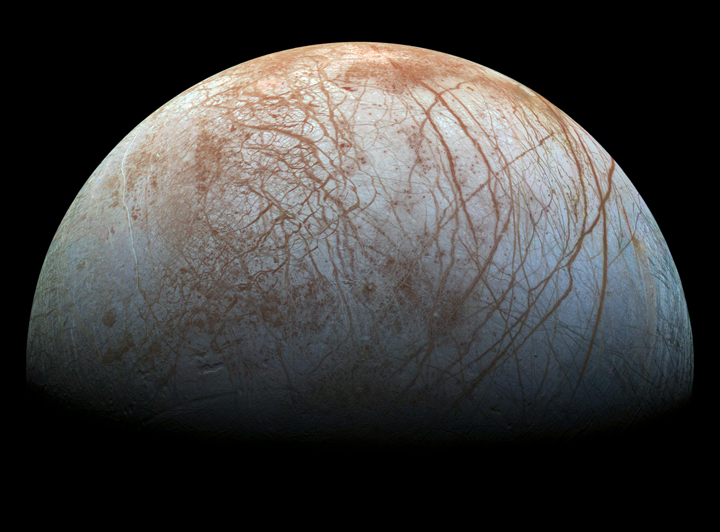TORONTO – It is a moon that many astronomers believe could hold the prospect of life and on Tuesday NASA unveiled the instruments that will explore the far off world.

In February, the American space agency announced that it was planning a mission to one of Jupiter’s moons, Europa.
READ MORE: Why are people excited about a mission to Jupiter’s moon? One word: Life
The moon, about the size of our own, is covered in an icy crust. Beneath that crust, astronomers believe lies an ocean of water, possibly twice the size of our own oceans. They also believe that salt water, a rocky floor and hydrothermal vents — areas where life exists here on Earth — are also present. Plumes of water vapour emerging from cracks on the ice have also been observed by Hubble Space Telescope.
All these elements together produce an environment that could support life. But scientists need to examine the moon more closely and collect further data to determine if it is indeed possible for life to exist.
“We’re trying to answer the big questions: where did we come from and where are we going and is there life in the universe,” John Grunsfeld associate administrator for the Science Mission Directorate at NASA, said during a press conference on Tuesday.
Of the 33 proposals NASA received, it chose nine instruments to be carried on the spacecraft.
Though the mission, with a proposed launch date of the mid-2020s, will not search for life, it will attempt to determine whether or not the moon is habitable.
The questions the mission seek to answer are:
- How deep and salty is the ocean?
- How thick is the ice shell?
- How active is the ice shell?
- What’s the brown stuff?
- Where are the plumes and what is in them?
“All of these instruments are designed to increase our rather limited knowledge of Europa,” said Curt Niebur, Europa program scientist.
“All are aimed to answer the question: Is Europa habitable?”
One of the most intriguing questions scientists would like answered is what is the “brown gunk” — what Niebur said is the term they use for the brown material — on the surface of the moon. It’s believed that water is bringing the brown material to the surface.
The last mission around Europa was the Galileo probe in the 1990s. Though the spacecraft was on a mission to Jupiter, it orbited Europa 11 times. This will be a dedicated mission that will be able to map about 90 per cent of the moon at a resolution of 15 metres.
“Answering that big question is there life in the universe is best answered by is there life in our solar system,” Grunsfeld said.
“If we find life or indications of life, that would be an enormous step in understanding our universe.”



Comments